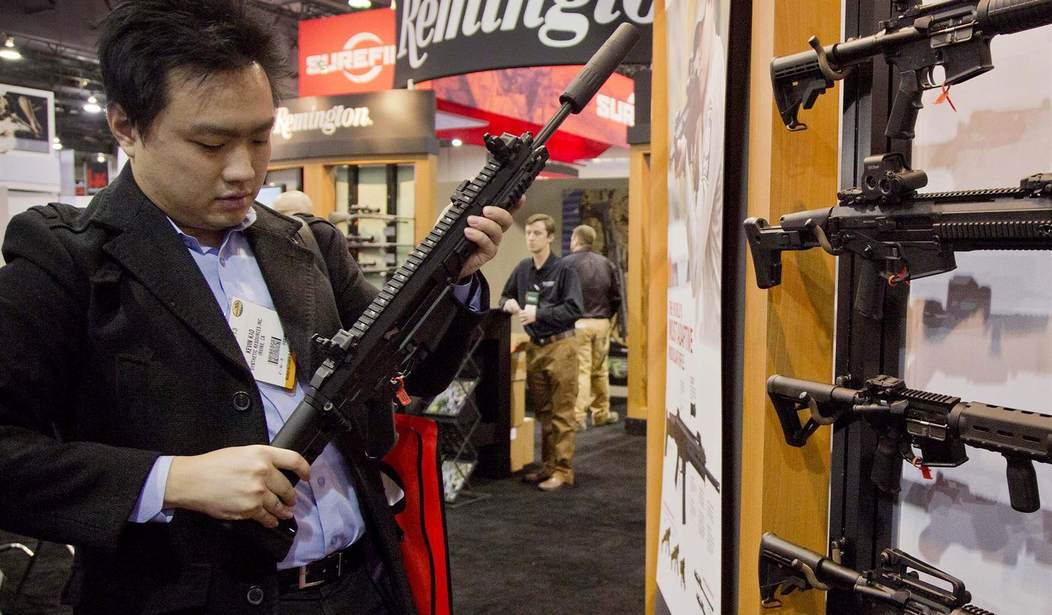The lawsuit by the families of the Sandy Hook school shooting victims was an attempt to get around industry protections for criminal misuse under the Protection of Lawful Commerce in Arms Act (PLCAA), by using creative arguments on gun marketing to a sympathetic (read: biased) Connecticut State Supreme Court. Although the firearm was bought and owned by the mother of the shooter, not the shooter himself, the political hacks at the Connecticut Supreme Court, in a 4-3 ruling, allowed the lawsuit to proceed, using the Connecticut Unfair Trade Practices Act (CUTPA) as a pretext.
Finally, in March 2022, the families settled with the bankrupt Remington and reached a $73 million settlement. As part of that settlement, the defunct Remington released their internal marketing documents and communications. This material was the fruit of unethical lawfare and political hackery at the Connecticut Supreme Court; it is in a sense the “Fruit of the Poisonous Tree.” The marketing material is out, and two “reporters” at the Wall Street Journal used that material to stoke more outrage against the firearms industry. Note that these two WSJ employees, Cameron McWhirter and Zusha Elinson, are anti-Second Amendment activists. They wrote the book, “American Gun: The True Story of the AR-15,” which was harshly and justly criticized by Tom Gresham at Gun Talk, and also received a kinder, gentler, negative review by Professor David Yamane at his Gun Curious blog (archived links).
The Wall Street Journal report was quoted by Bloomberg/Everytown-funded smear site Smoking Gun and parroted by Everytown on their X/Twitter feed (archived):
New documents reveal gunmaker Remington signed a confidential deal in 2009 to get its products into first-person-shooter video games & establish brand awareness among a new consumer base of "young potential shooters." https://t.co/rehCXLW83y
— Everytown (@Everytown) October 17, 2023
The WSJ article (archived) makes mountains out of molehills, and paints common business practices, including routine confidentiality, as nefarious and conspiratorial.
Remington signed product-placement deal with Activision to reach young gamers, newly released documents show
The documents, from the late 2000s and early 2010s, show Remington and Freedom Group officials pursued deals to place their guns in shooter videogames as part of a marketing push for new audiences because they were concerned their customer base was aging.
An undated Freedom Group memo titled “Gaming Strategy” said, “With increasing urbanization and access to shooting/hunting areas in decline, a primary means for young potential shooters to come into contact with firearms and ammunition is through virtual gaming scenarios.” […]
The records show Remington signed a deal in 2009 with videogame publisher Activision Blizzard to put a new weapon called the Adaptive Combat Rifle, or ACR, in its 2009 release “Call of Duty: Modern Warfare 2.”
People have debated whether violence in videogames and other media encourages real-world shootings. The details in these documents raise a separate question: Whether they can help to sell firearms, just like product placement for phones or shampoo. […]
In an article published this year on Charlie INTEL, a Call of Duty news site, one author called the ACR “one of the most popular weapons in Call of Duty history.”
However, its popularity in the game didn’t translate to real-world sales. The ACR faced numerous problems including a recall following the discovery of a design flaw.
There’s a lot more in the WSJ article. It’s pathetic, but at least the reporters mentioned that inclusion in the Call of Duty franchise didn’t translate into real-world sales. There isn’t any evidence that first-person shooter games translate into mass shootings either, even though Wayne LaPierre fecklessly blamed video games for Sandy Hook.
I am a former Call of Duty player myself and played countless hours of the game before I became a father and parenting took up most of my time. Playing that game never made me think of pointing a gun at another human being or even an animal. I was raised vegetarian and still remain one. I never hunt and only shoot at paper, cardboard, and steel targets. It’s preposterous and condescending to suggest that product placement in gaming makes people killers. There are hundreds of millions of gamers out there and they don’t hurt anyone.
The WSJ “reporters” didn’t pause to ask another important question: does playing Grand Theft Auto make a driver more likely to run over other people with cars? That game even had a part where the player can run over Hare Krishnas and get a “Gouranga” bonus for running over all of them. Did GTA motivate the Isla Vista or the Waukesha killers to run people over with their cars?
Unfortunately, there’s more to come from the internal documents taken from Remington:
Josh Koskoff, lead attorney for the families, said his firm will post documents from the suit online in the coming weeks, including those related to the Remington-Activision agreement.
The gun industry shouldn’t shy away from these attacks. If marketing in video games sells more of your product, do it unabashedly. Letting these sharks nibble at your pinkie won’t make them go away; it will only encourage them to come back and bite off your limb. There’s no compromising or reasoning with someone who wants you completely destroyed.









Join the conversation as a VIP Member